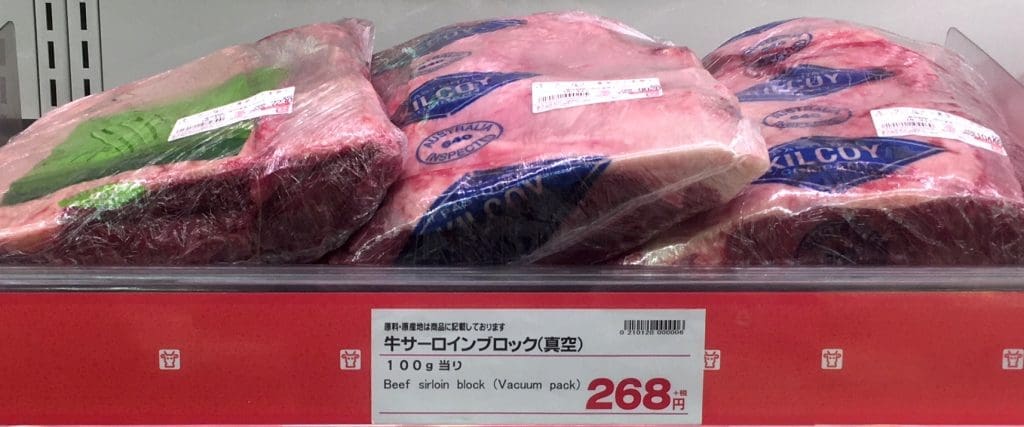A NEW US meat research project is looking at the potential to use mass spectrometry technology to differentiate meat quality, and determine appropriate aging regimes in beef samples.
A $294,000 grant has been awarded to Texas Tech University’s College of Agricultural Sciences and Natural Resources to further research into the use of new mass spectrometry technology to determine tenderness, flavour and juiciness of beef samples in real time.
Funded by the US Department of Agriculture’s National Institute of Food and Agriculture Cooperative State Research Education and Extension Service, the beef aging research project will be conducted in collaboration with researchers at Colorado State University and USDA’s Agricultural Research Service.

Determining the proper aging time for meat has been tricky. Researchers at Texas Tech U in the US are hoping to increase that accuracy in real time. Image shows Australiam chilled striploins for sale in Japan.
One of the methods used to deliver Americans the most tender, tastiest and juiciest cut of meat is aging beef, to bring out as much flavour and tenderness as possible. But aging the beef can be tricky, and research has shown that over-aging beef can bring about compositional changes that affects beef flavour, and not in a good way, a report in Texas Tech Today says.
Recently, a new technology has been developed that can help avoid over-aging. Rapid Evaporative Ionization Mass Spectrometry (REIMS) utilises metabolomics – the large-scale study of small molecules, called metabolites, within cells, biofluids, tissues or organisms – to identify compositional differences in beef. The goal is to predict beef sensory performance to determine the exact peak of beef aging.
But because it is a novel technology, its effectiveness hasn’t been definitively determined. A group of researchers at Texas Tech, collaborating with others at Colorado State U and the US Department of Agriculture, is taking on that task.
Associate professor Dale Woerner is leading the research.
The team’s goal is to develop REIMS as a real-time method for classifying the quality of beef products, by evaluating REIMS’ ability to predict beef sensory and tenderness, identify changes in beef flavour and tenderness as it ages, and characterise the effect of extended aging on palatability.
“We are excited to collaborate on this effort aimed at discovering the potential of a very unique technology to differentiate the quality of beef products,” Prof Woerner said.
“This technology, among others, is the future of differentiating quality and safety attributes of agricultural products intended for food.”
REIMS uses time-of-flight mass spectrometry to provide in-situ, molecularly resolved information in real time by ionizing biological samples without having to prepare the sample for examination. Utilising both domestic and exported beef samples with a wide variety of aging days, researchers will use REIMS to repeatedly measure beef flavour, tenderness and juiciness.
They then will develop prediction models, including multiple machine-learning processes, in an attempt to understand the ability of REIMS to measure and predict these changes depending on the time the beef has aged.
If successful, this would allow these characteristics, so important to beef consumers, to be predicted in real time and produce optimum cuts of meat in regards to tenderness, flavour and juiciness.

VERY interesting research that could be significant if successful. Of course there is no mention of cost. Guess costs don’t matter to researchers.